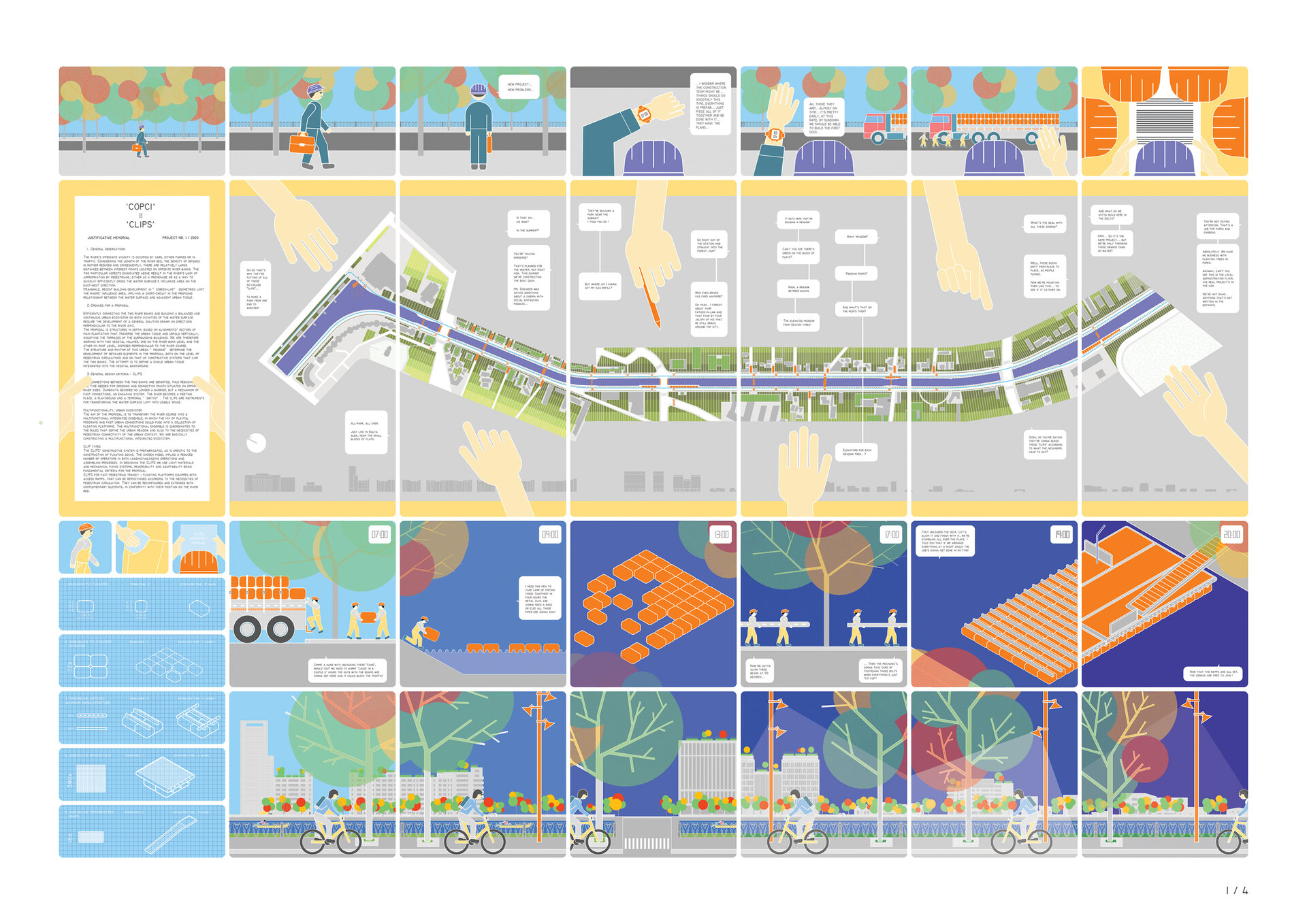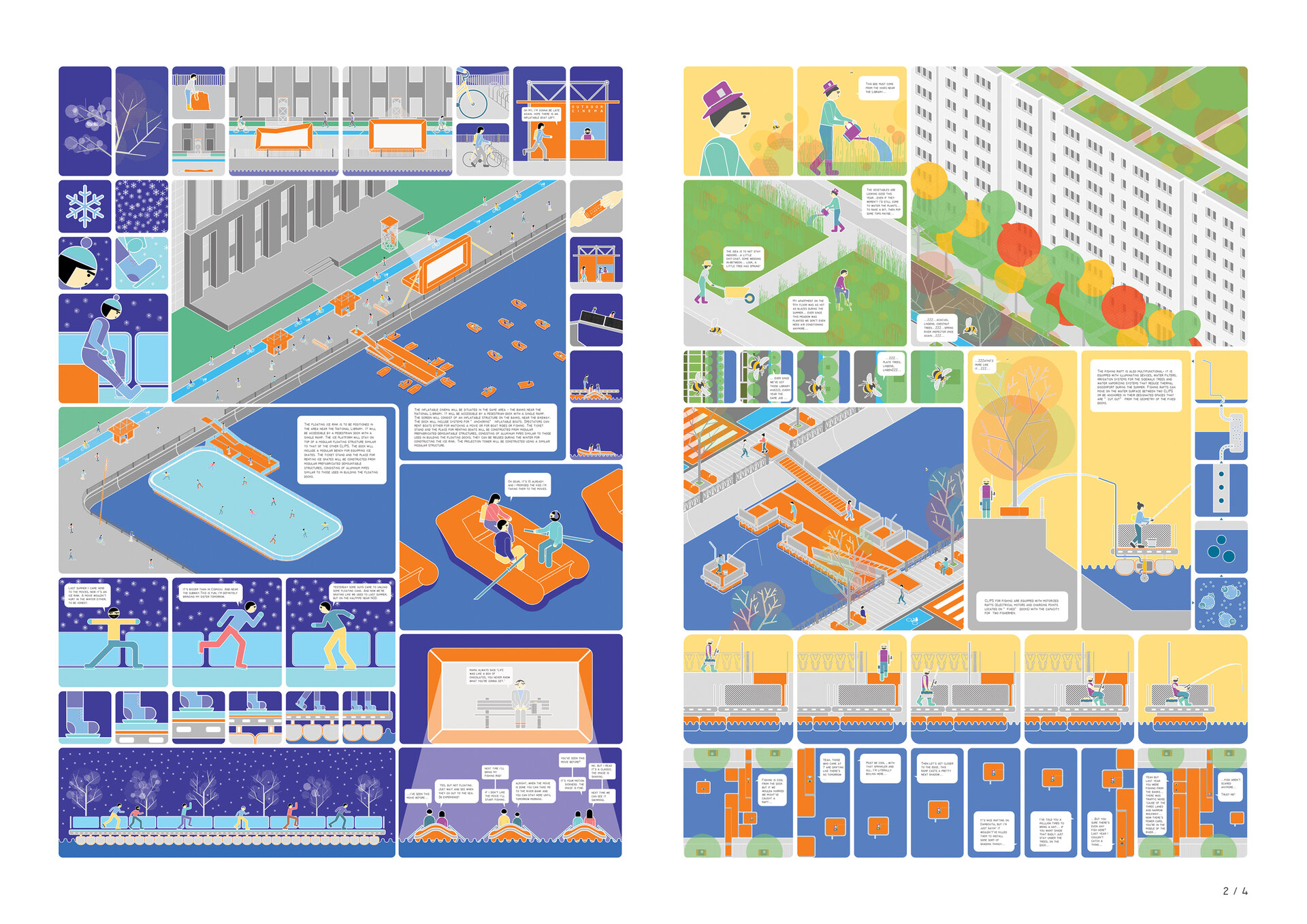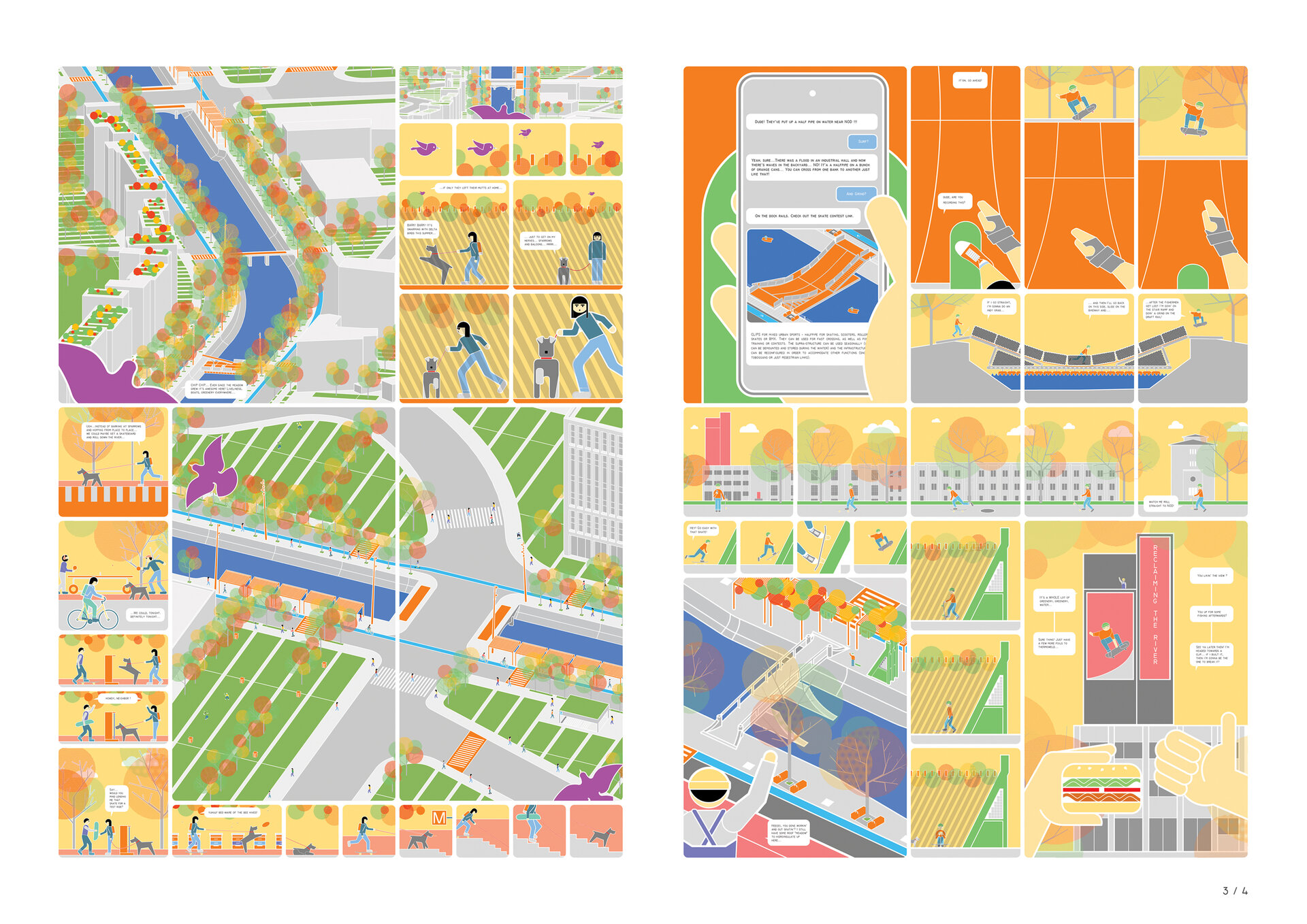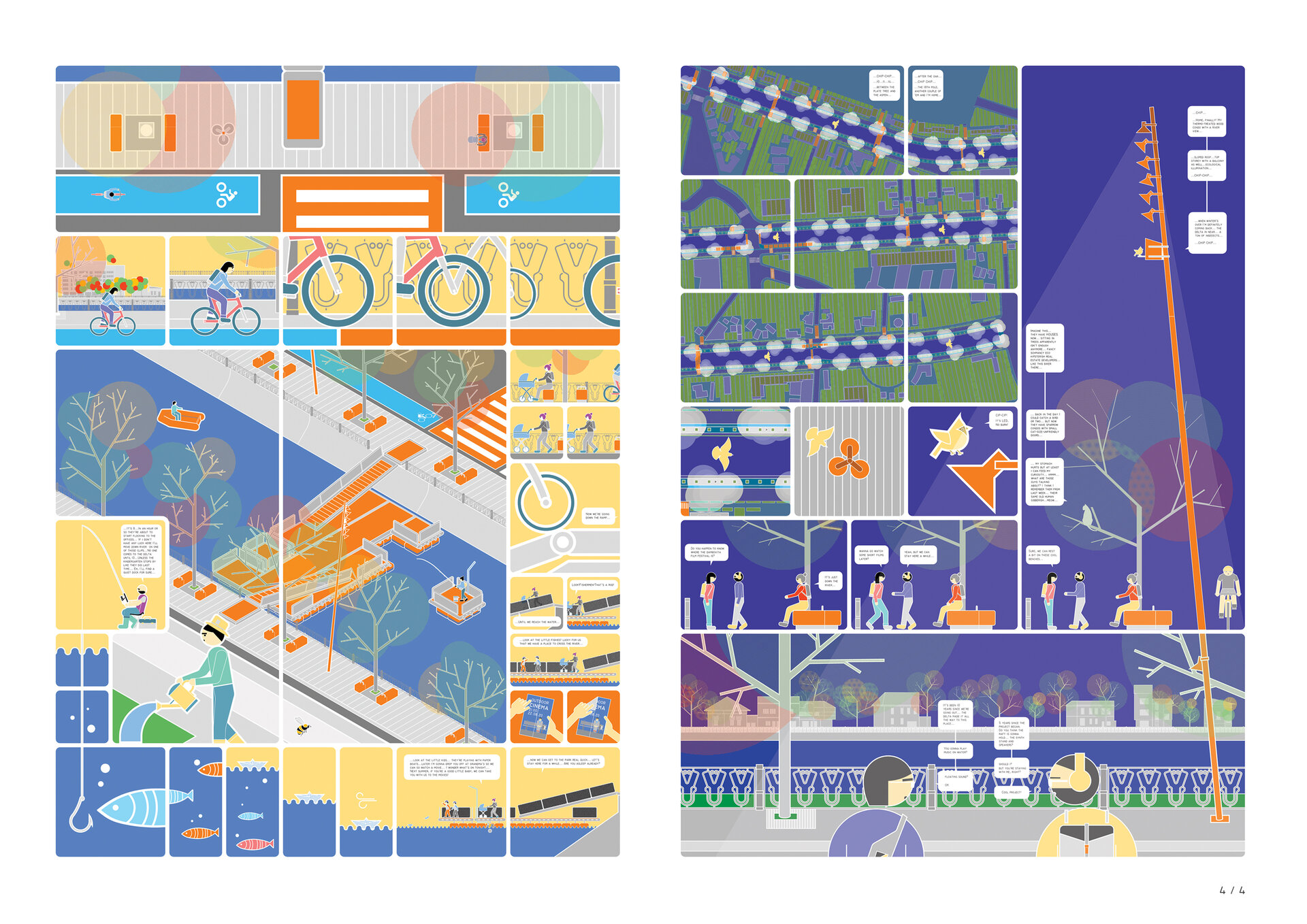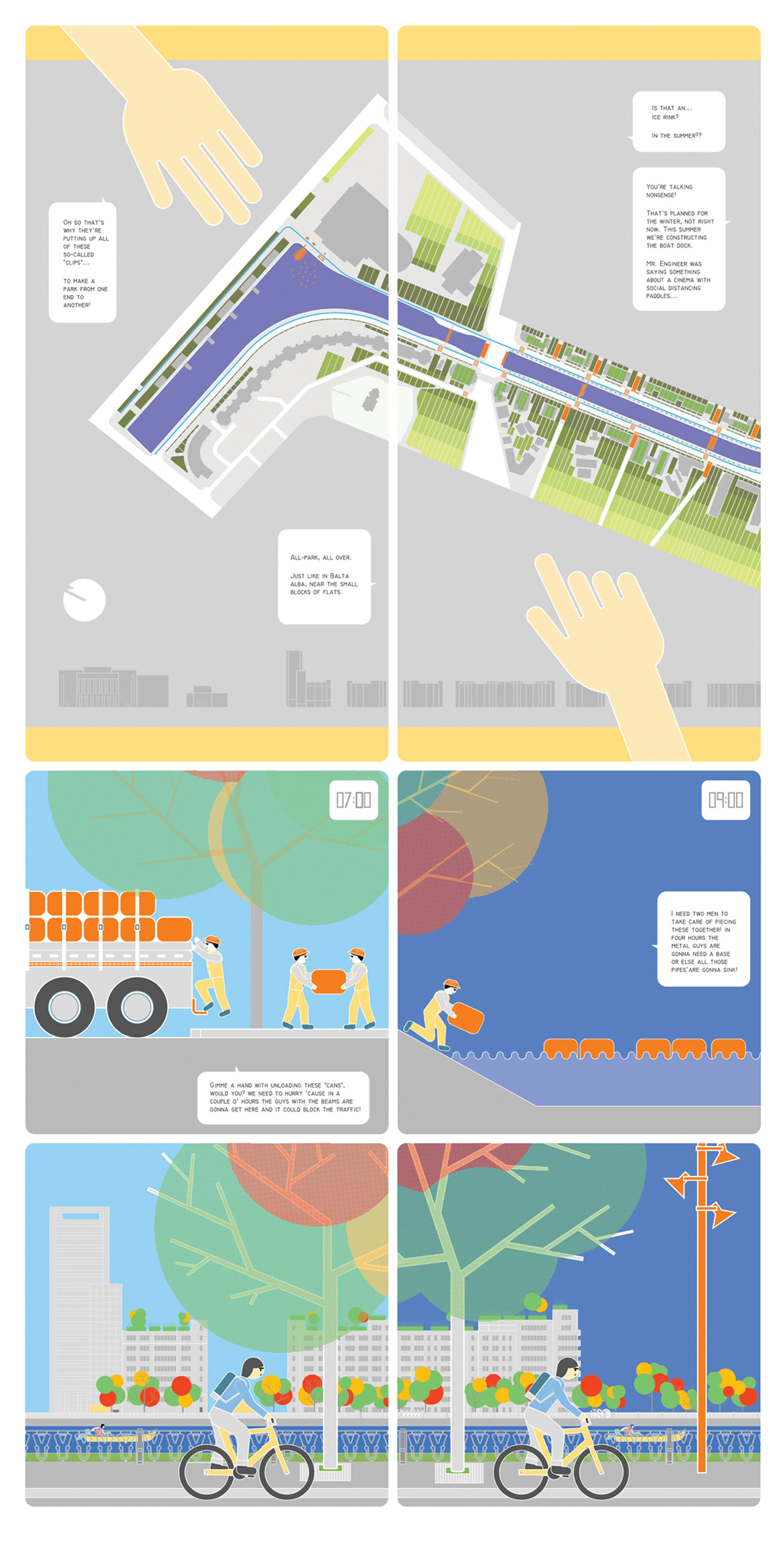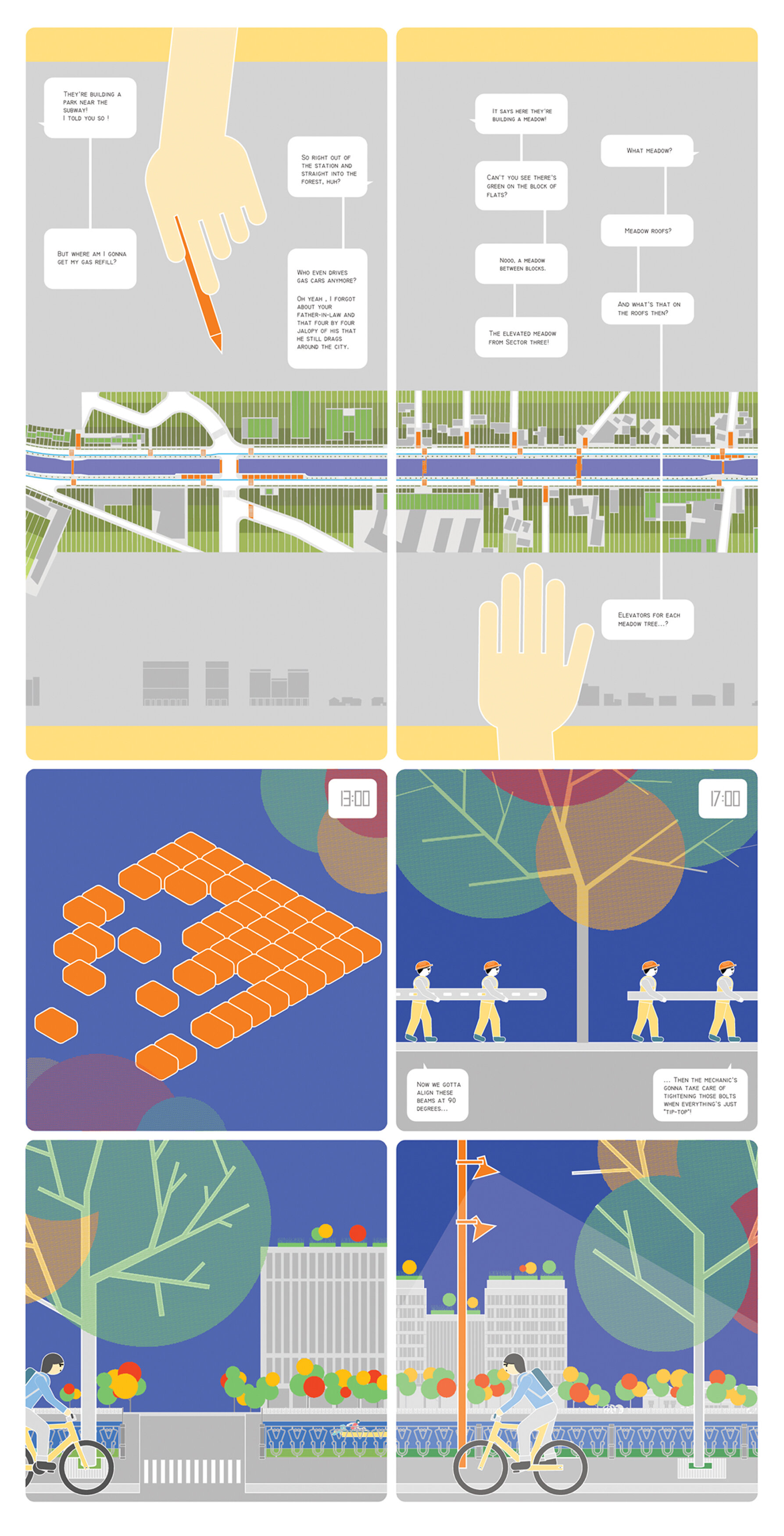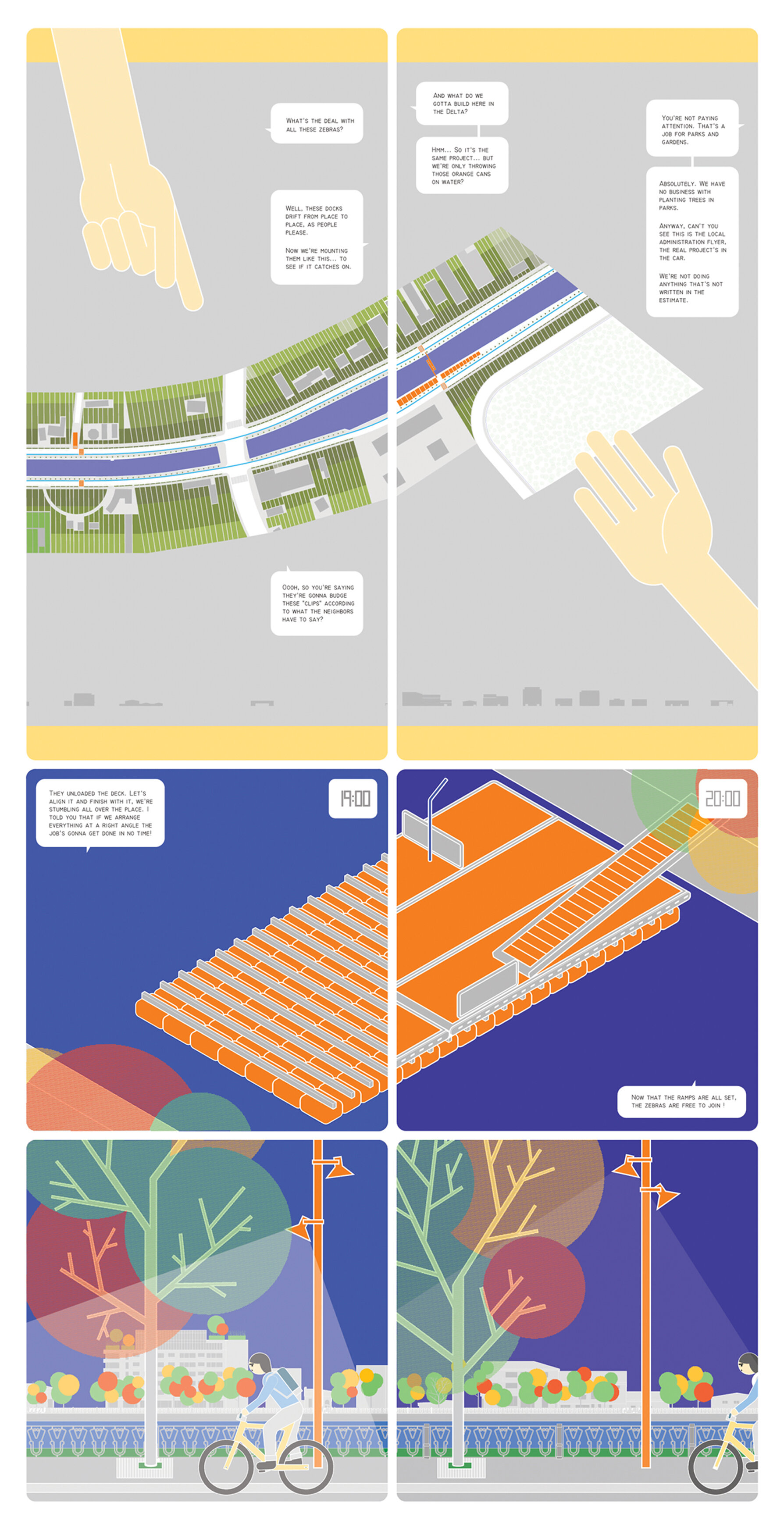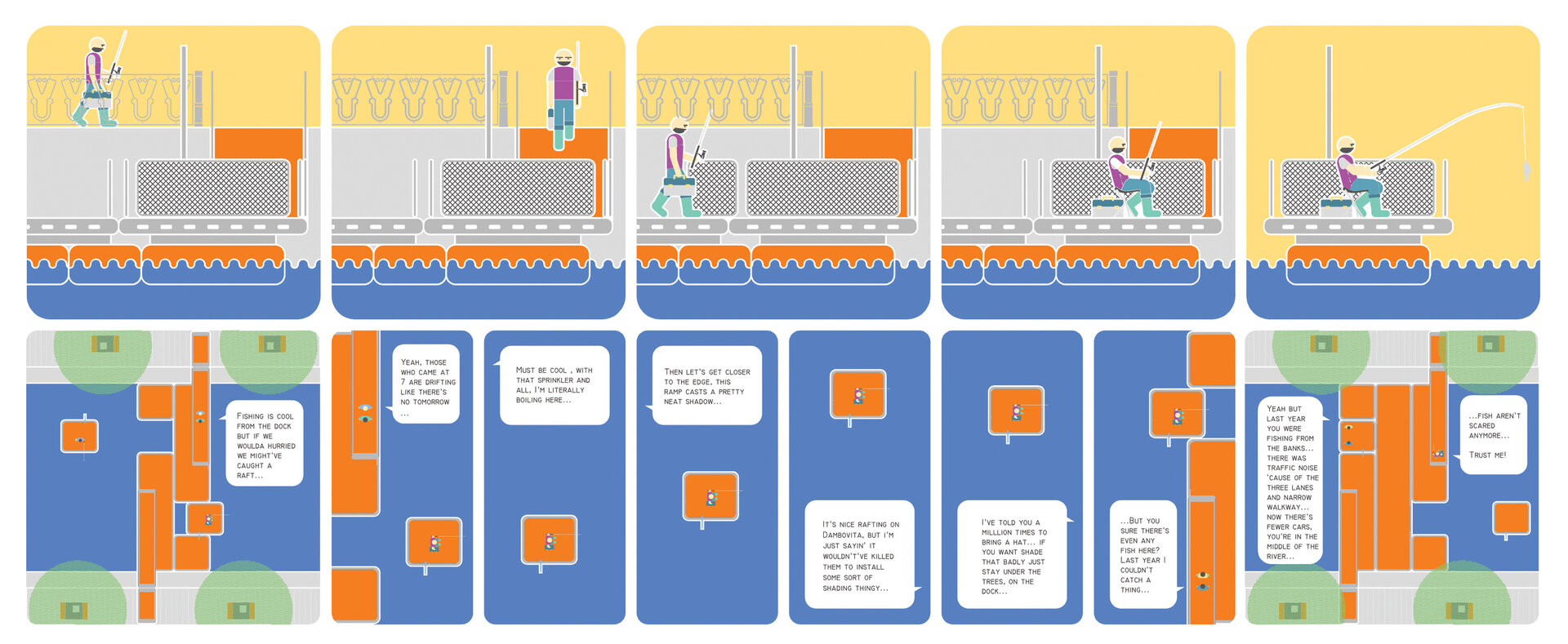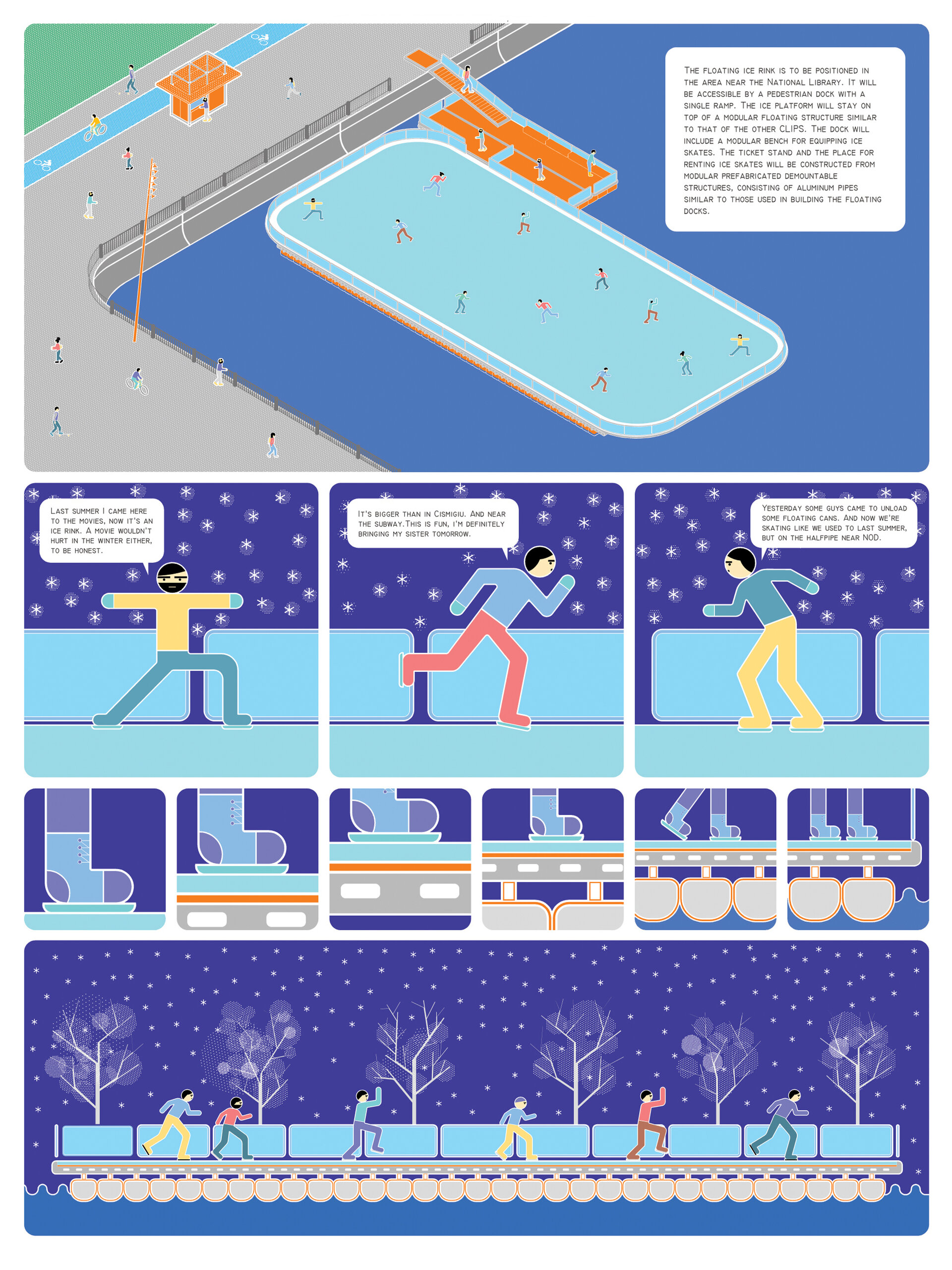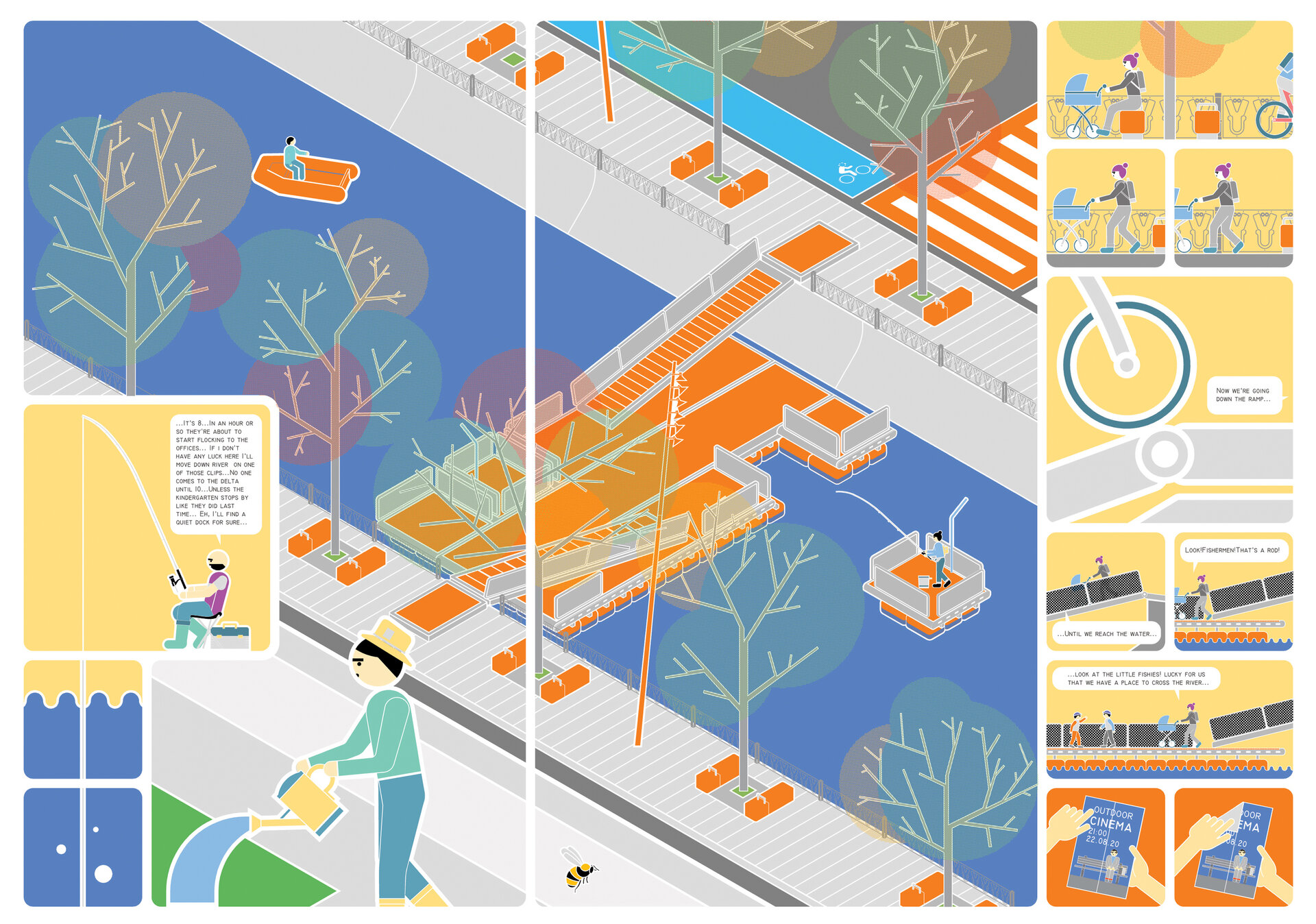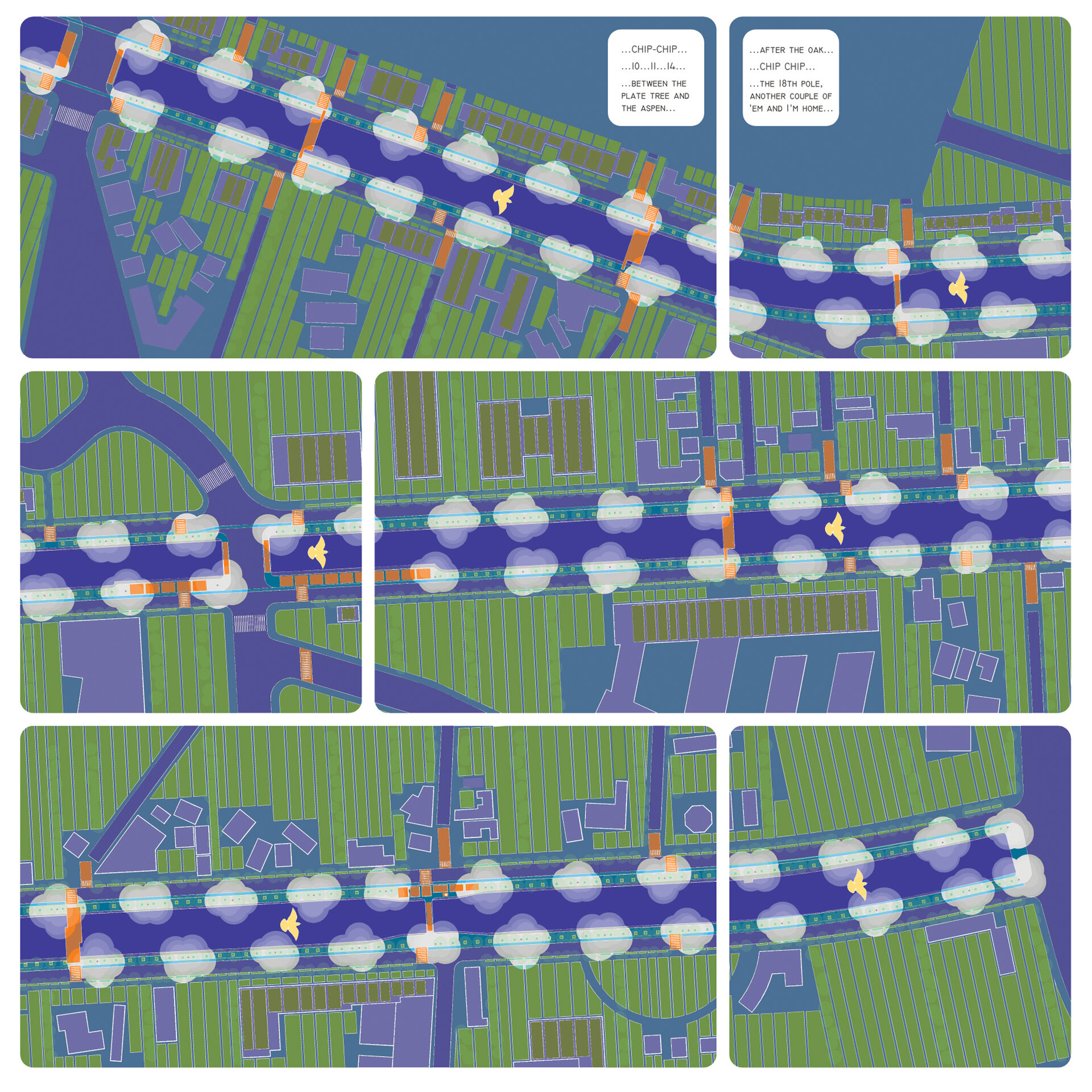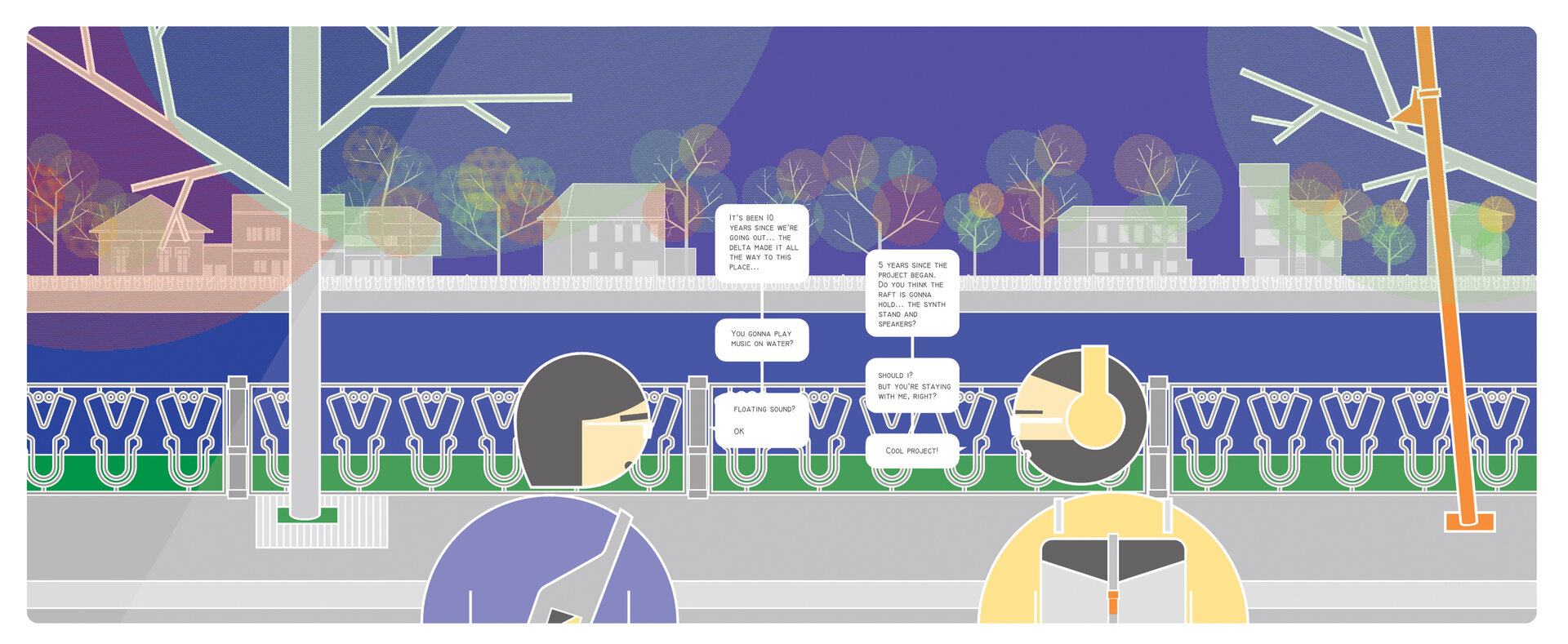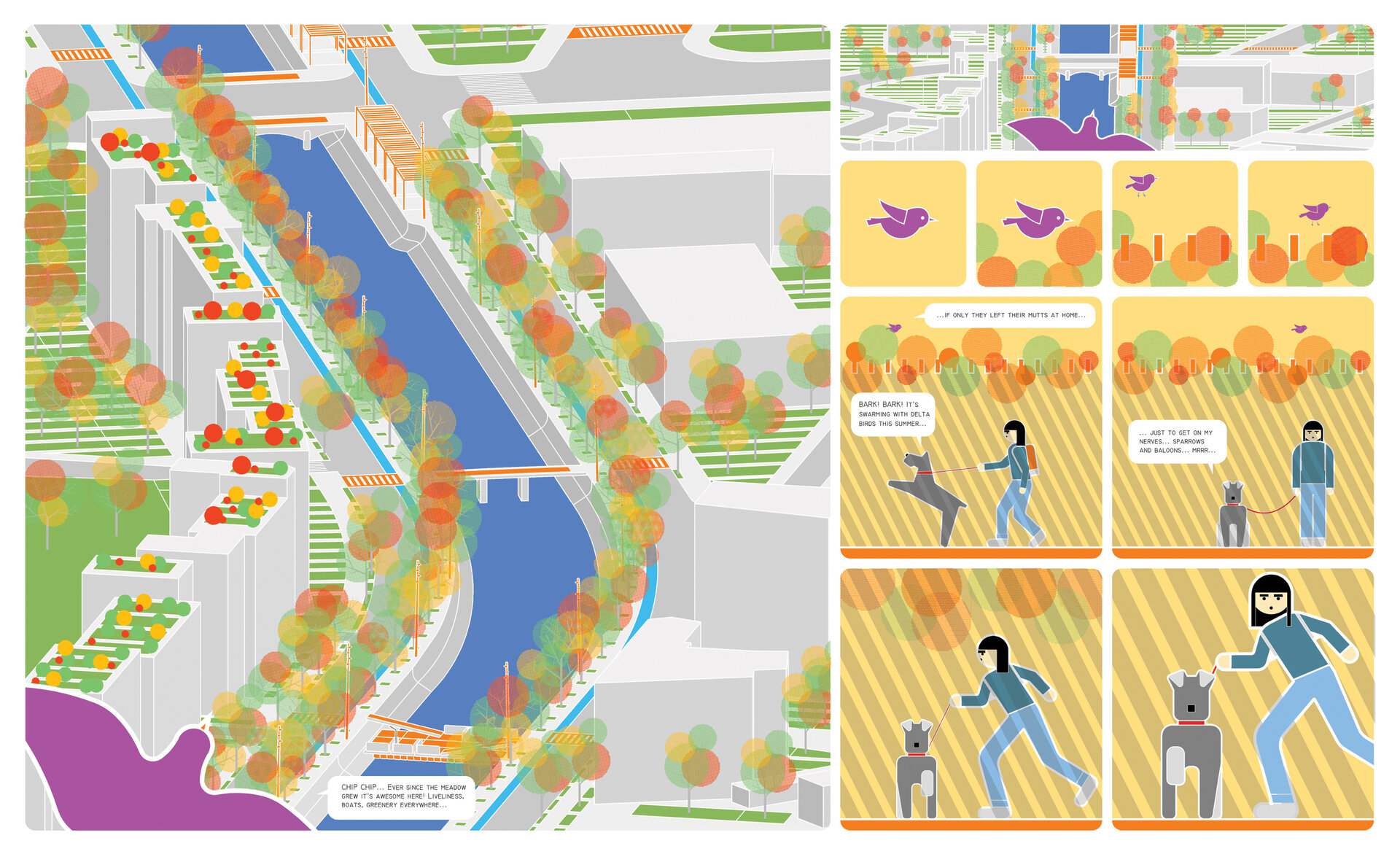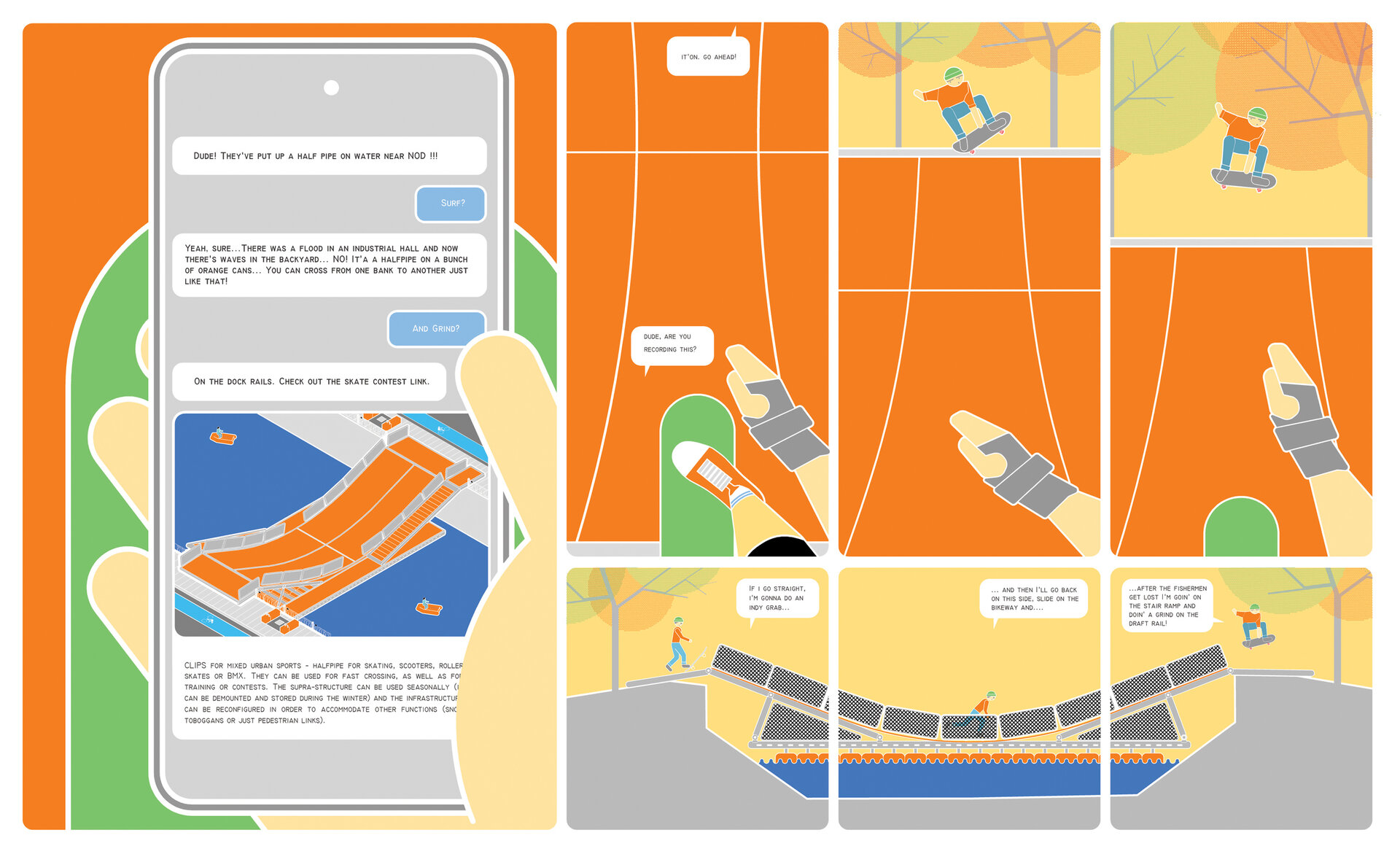
Clips
Authors’ Comment
“CLIPS”
The Dambovita river’s immediate vicinity is occupied by cars, either parked or in traffic. Considering the length of the river bed, the density of bridges is rather reduced and consequently, there are relatively large distances between interest points located on opposite river banks. The two particular aspects enunciated above result in the river’s lack of appropriation by pedestrians, either as a promenade or as a way to quickly/ efficiently cross the water surface’s influence area on the east-west direction.
Efficiently connecting the two river banks and building a balanced and continuous urban ecosystem on both vicinities of the water surface require the development of a general solution drawn on directions perpendicular to the river axis.
The proposal is structured in depth, based on alignments/ vectors of main plantation that traverse the urban tissue and unfold vertically, occupying the terraces of the surrounding buildings. We are therefore working with two vegetal volumes, one on the river bank level and the other on roof level, disposed perpendicular to the river course.
The structure and rhythm of this urban “meadow” determine the development of detailed elements in the proposal, both on the level of pedestrian circulations and on that of constructive systems that link the two banks. The attempt is to define a single urban tissue integrated into the vegetal background.
Multifunctionality, urban ecosystem
The aim of the proposal is to transform the river course into a multifunctional integrated ensemble, in which the mix of playful programs and fast urban connections could fuse into a collection of floating platforms. The multifunctional ensemble is subordinated to the rules that define the urban meadow and also to the necessities of pedestrian connectivity of the urban context. We are basically constructing a multifunctional integrated ecosystem.
CLIP types
The CLIPS’ constructive system is prefabricated, as is specific to the construction of floating docks. The chosen model implies a reduced number of operators in both loading/unloading operations and assembling processes. In designing the CLIPS we use light materials and mechanical fixing systems, reversibility and adaptability being fundamental criteria for the proposal.
CLIPS for fast pedestrian transit – floating platforms equipped with access ramps, that can be repositioned according to the necessities of pedestrian circulation. They can be reconfigured and extended with complementary elements, in conformity with their position on the river bed.
CLIPS for mixed urban sports – halfpipe for skating, scooters, roller skates or BMX. They can be used for fast crossing, as well as for training or contests. The supra-structure can be used seasonally (it can be demounted and stored during the winter) and the infrastructure can be reconfigured in order to accommodate other functions (snow toboggans or just pedestrian links).
CLIPS for fishing - equipped with motorized rafts (electrical motors and charging points located on “fixed” docks) with the capacity for two fishermen. The fishing raft is also multifunctional – it is equipped with illuminating devices, water filters, irrigation systems for the sidewalk trees and water vaporizing systems that reduce thermal discomfort during the summer. Fishing rafts can move on the water surface between two CLIPS or be anchored in their designated spaces that are “cut out” from the geometry of the fixed docks.
- Uranus Now. Urban and community project
- B:MAD Bucharest Modernism Art Deco
- Govora Thermal Architecture Week
- MAZZOCCHIOO
- Inside – the Instagram housing
- Breaking Ground. The schoolyard workshops
- Kid’s Factory – Rethinking Conversation
- The Virtual Reconstruction of the Simu Museum
- InFlorești summer school
- Clips
- Architectural education, otherwise: To learn from building or „From one day project to one day building”
- UAUIM participation at „Designing the Unesco Buffer Zone – Call Internazionale di Progettazione per La Grande Villa Adriana” (Premio Piranesi 2018)
